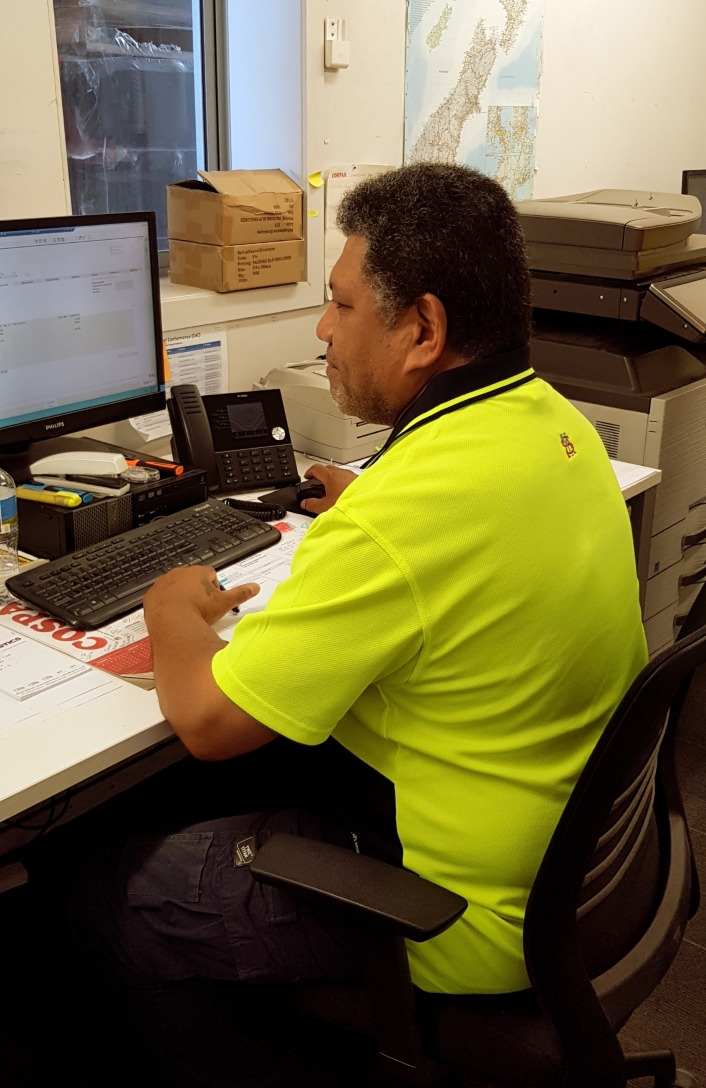Free Excel Template To Manage Employee Uniform & Safety Gear
You have been keeping an inventory list of the uniforms & PPE items you’ve purchased for six months, and now you want to keep your employees accountable and identify exactly who has what gear at all times and save item sizes to save time for future orders…
We don’t blame you for reaching out for a spreadsheet when just about every business on Earth has Microsoft Office installed somewhere. It’s readily available, and almost every administrative staff is familiar with using the suite of word processing, presentation and spreadsheet applications.
However, the easiest solution is often not the best in the long run. Here, we explain why!
The Disadvantages of Microsoft Excel
Many medium to large sized companies rely on manual methods of inventory management. This typically means Excel or even using good, old- pen and jotter notes.
Assuming all of your team are good with Excel (which many won't be). Excel is, of course, relatively cheap software and most companies staff have access to an annual license. However, Excel offers no user support, no accountability, and is known for its tendency to conveniently drop cells of data at random. As Harvard studies report, over 80% of all spreadsheets contain some form of error. It certainly seems straightforward to control your inventory using spreadsheets, but this is, slow, insecure and very prone to error.
![]()
Read on to get your free download template.
6 Reasons why Excel is a poor choice for Uniform Issue Management
- Time-consuming
Many admin teams spend hours every week updating Excel. If you’re paying people to spend their time necessarily entering data into on spreadsheets, you are wasting money. How much would your productivity increase if all that time spent working on spreadsheets could be used on mission-critical tasks?
Let's break down a common process we hear from customers: you have two staff members that each spends half an hour a week updating spreadsheets for uniform orders made. That's a total of 1 hour a week, and 52 hours per year. Let's say the average full-time employee costs about $50 an hour. With that said, your spreadsheets alone are costing you approximately $2,600 a year to maintain. - Prone to errors
Excel requires admin employees to enter the information manually. When you enter information by hand, this is going to lead to a lot of errors. Errors result in unreliable reports and can lead to poor business decisions. According to research, the error rates in spreadsheets are roughly the same as in other types of activities with a similar level of complexity (such as computer programming), i.e. around 3%-5%.
Administrations are known to be exceptionally busy people, often meaning it is unrealistic to expect them to manually update spreadsheets with every piece of new information. E.g. do garment & footwear returns always get unallocated from staff members? - Not designed for collaborative work
Accurate garment allocation typically requires information from different administrators belonging to different departments or branches. If a company’s offices are scattered throughout the country or if certain team members are separated by long distances the only way to exchange data stored in spreadsheets is through email, or via Google docs / SharePoint. Even these modern solutions are difficult to share, could accidentally be deleted or changed, meaning the data is rarely “live” or real-time. - No real-time information
Your current apparel inventory levels are only going to be as real-time as your most recent data entry. This is why you wouldn’t be able to track who has what, when they last purchased and how much is in your stock cabinet. A spreadsheet is not capable of tracking real-time stock flows.
Non-web-based systems are also rarely available 24/7 365. - No Usage Reports
Failing to produce simple spend & usage reports as well as to track staff uniform & PPE allocation, makes manual input systems a bit obsolete. Spreadsheets will crunch and provide numbers for you. But what about analysis and reporting? This needs to be live and accessible by management without complicated setup. - Doesn’t scale well
As your organisation grows, data in spreadsheet-based systems get more distributed; subsequently compounding the issues outlined above. No large organisation should keep using excel spreadsheets in place of software.
If you are using Excel for apparel inventory management, it will be harder than it needs to be...
Excel is a standalone piece of software and can only manage one thing at a time! Excel lacks real-time inventory integration - it's only as useful and relevant as the updated information that it's given. When you use Excel, it's far more difficult to track allocation of stock and any fall-out costs or savings, and even harder to provide visibility over your uniform spending. It offers no single view of the stock position that all team members can access, and also has no real back-up beyond saving multiple copies across different platforms, which is inconvenient and very inefficient.
Finally, Excel might be handy for a spreadsheet under a couple of hundred items, but if you need to handle large volumes of data? Forget about it. Just one mistype can wipe all of your numbers out.
Fortunately, however, there is an alternative to Excel!
The revolutionary alternative to excel
As you can see, there are many drawbacks of using Excel when it comes to stock management. You need to consider all of them.
There are a lot of better and plentiful alternatives that you might want to give a try. One platform developed by CleanlineTasman has been continually launching new features for its market-leading online platform.
Online Uniform management systems are platforms designed to make the process of procurement, distribution, and allocation super-efficient, while providing consumption visibility to allow for cost and compliance control.
CleanlineTasman’s uniform management solution (UMS) has over 220 companies and 47,000 individual staff profiles; therefore UMS is a tried and proven solution throughout Australasia, providing you with the confidence in its ability to perform.
Utilising this world-class software platform;
- eliminates the need for manual recording on spreadsheet’s your staff clothing orders, provides access to staff ordering history in one click
- automatically handles returns and tracks the budget allocations per staff member and provides current remaining budgets for each staff member
- pre-set’s company clothing range against each staff member to ensure a consistent image is achieved across your workforce
- removes typical spreadsheet errors and saves staff time resulting in fast returns for the companies bottom line
Having a comprehensive inventory management system is critical for your enterprise, and that’s worth investing in.
What UMS customers have to say
Wednesday 15th January 2020


